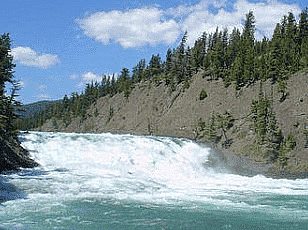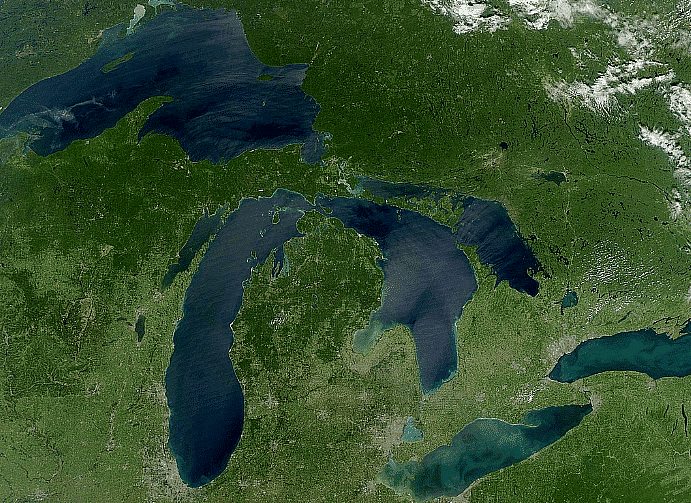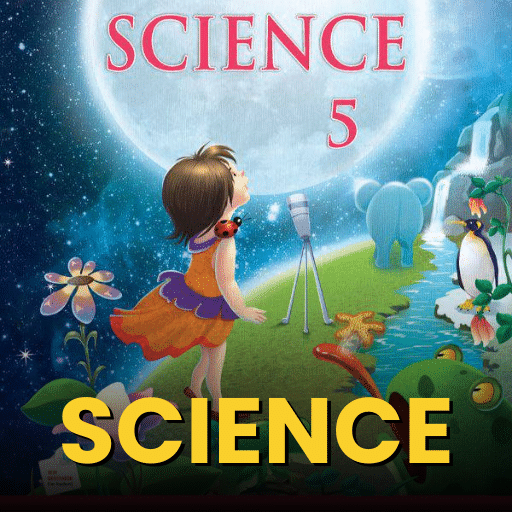Major Landforms - 1 Class 5 Worksheet SST
 Q1: True or False
Q1: True or False
(i) Mountains are the highest landforms on Earth.
Ans: True
Mountains are natural elevations of the Earth's surface, typically rising to considerable height and often featuring peaks. They are among the highest landforms, with some like Mount Everest reaching elevations exceeding 8,000 meters above sea level.
(ii) An island is a landform surrounded by water on all sides.
Ans: True
An island is defined as a piece of land that is completely surrounded by water, distinguishing it from continents and peninsulas.
(iii) A valley is a low-lying area of land between mountains or hills.
Ans: True
A valley is typically a stretched lowland between hills or mountains, often having a river or stream running along its length. It is characterized by its lower elevation relative to the surrounding terrain.
(iv) A desert is a landform with abundant rainfall and vegetation.
Ans: False
Deserts are defined by their dry conditions, receiving very little precipitation annually. They often have sparse vegetation due to the lack of water, making this statement incorrect.
(v) A canyon is a deep, narrow valley with steep sides.
Ans: True
A canyon is a deep, narrow depression in the Earth's surface, typically with very steep sides. They are usually formed by the erosion activity of rivers over geological timescales.
(vi) A plateau is a flat, elevated landform.
Ans: True
A plateau, also known as a tableland, is a large flat-topped area that rises sharply above the surrounding area. It is often found at high altitudes.
(vii) A peninsula is a piece of land surrounded by water on three sides.
Ans: False
A peninsula is a landform that is surrounded by water on three sides but remains connected to a larger landmass on one side.
(viii) A volcano is a landform formed by the eruption of hot magma from Earth's interior.
Ans: True
A volcano is formed by the geological activity involving the ascent of magma from the Earth's mantle to the surface. When magma erupts through the crust, it builds up around the vent, creating a volcanic mountain.
(ix) A plain is a landform characterized by gentle slopes and low elevation.
Ans: True
Plains are large stretches of flat or gently undulating land that do not exhibit high elevations or steep gradients. They are often formed by sediment deposition from rivers.
(x) A river is a flowing body of water that typically empties into an ocean or lake.
Ans: True
Rivers are natural watercourses, flowing towards larger bodies of water such as seas, oceans, or lakes. They are crucial for the drainage of land, facilitating the movement of water through hydrological cycles.

Q2: Fill in the Blanks
(i) The highest mountain in the world is __________.Ans: Mount Everest
(ii) A large body of saltwater is called a __________.
Ans: Sea or Ocean
(iii) The Great Barrier Reef is an example of a __________.
Ans: Coral Reef
(iv) The Grand Canyon is an example of a __________.
Ans: Canyon
(v) The Himalayas are an example of a __________.
Ans: Mountains
(vi) A landform that has steep sides and a flat top is called a __________.
Ans: Plateau
(vii) The Amazon River flows through the __________.
Ans: Amazon Rainforest
(viii) The Great Plains in the United States are an example of a __________.
Ans: Plain
(ix) The Sahara Desert is located in __________.
Ans: Africa
(x) The Great Lakes are a group of five __________ located in North America.
Ans: Lakes

Q3: Match the Following
Ans:
A - 2 (Mountain - High elevation, steep slopes)
B - 1 (Plateau - Flat, elevated landform)
C - 4 (Desert - Sparse vegetation, extreme temperatures)
D - 3 (Plain - Fertile land, easy to build on)
E - 5 (River - Flows into larger bodies of water)
Q4: Find the Odd One Out and Give Reason.
(i) Mountain, Plateau, Canyon, Desert
Ans: Canyon
Unlike the others which are primarily elevated or large landforms, a canyon is a deep, narrow valley with steep sides, typically carved by river erosion.
(ii) River, Lake, Ocean, Plain
Ans: Plain
Rivers, lakes, and oceans are bodies of water, whereas a plain is a large area of flat or gently rolling land.
(iii) Volcano, Peninsula, Island, Plateau
Ans: Plateau
Volcano, peninsula, and island can all be associated with formations involving water (island and peninsula surrounded by water, volcanoes often near water bodies or creating islands); a plateau is typically an elevated flat landform without direct association with water.
Q5: Short Answer Type Questions
(i) Define a volcano and explain how it is formed.
Ans: A volcano is a landform that forms when molten rock, ash, and gases escape through the Earth's crust. This molten rock, known as magma, is formed from the melting of rocks deep within the Earth. When the pressure builds up, the magma erupts through a vent or opening, creating a volcano. The erupted material, including lava, ash, and volcanic gases, can build up around the vent, forming a mountain-like structure. Volcanoes can be found on land or underwater.
(ii) Name two major types of landforms found underwater and describe them briefly.
Ans: Two major types of landforms found underwater are seamounts and ocean trenches. Seamounts are volcanic mountains that rise from the ocean floor but do not reach the surface. They can be cone-shaped or elongated and are formed by volcanic activity. Ocean trenches, on the other hand, are long, narrow depressions on the ocean floor. They are formed when two tectonic plates converge, and one plate is forced beneath the other, creating a deep trench. The Mariana Trench in the western Pacific Ocean is the deepest known trench on Earth.
(iii) What are the main characteristics of a mountain range?
Ans: Mountain ranges are characterized by a series of connected mountains. They are formed through tectonic processes, such as the collision of continental plates or the uplift caused by volcanic activity. The main characteristics of a mountain range include high elevation, steep slopes, and a series of peaks or summits. They often form natural barriers, influencing weather patterns and creating diverse ecosystems.
(iv) How are islands formed?
Ans: Islands are formed through various processes. One common way is through volcanic activity. When an underwater volcano erupts, it can build up layers of lava and ash, eventually rising above the water surface and forming an island. Another way islands are formed is through the deposition of sediment carried by rivers or ocean currents. Over time, these sediments accumulate and can create landforms that become islands.
(v) Briefly explain the process of erosion and its impact on landforms.
Ans: Erosion is the process of wearing away or breaking down landforms through the movement of water, wind, ice, or other agents. It can have a significant impact on shaping landforms over long periods. Water erosion, for example, occurs when rivers or waves remove soil and rock particles from the land, creating features like valleys and canyons. Wind erosion can carry and deposit particles, leading to the formation of sand dunes in deserts. Erosion can also contribute to the formation of caves through the dissolution of limestone by water.
|
32 videos|228 docs|48 tests
|
FAQs on Major Landforms - 1 Class 5 Worksheet SST
| 1. What are landforms? |  |
| 2. How are mountains formed? |  |
| 3. What causes the formation of valleys? |  |
| 4. How do plateaus form? |  |
| 5. What is the difference between a hill and a mountain? |  |

























